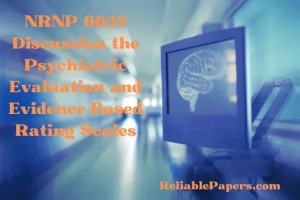Sample Marketing Research Paper Examples for Students
 Marketing research papers are academic papers that analyze and explore various aspects of marketing, such as consumer behavior, product development, advertising and promotion, and sales and distribution. The goal of these papers is to offer ideas and suggestions that can be used to improve marketing practices and add to what is already known in the field.
Marketing research papers are academic papers that analyze and explore various aspects of marketing, such as consumer behavior, product development, advertising and promotion, and sales and distribution. The goal of these papers is to offer ideas and suggestions that can be used to improve marketing practices and add to what is already known in the field.
These papers typically follow a standard structure, including an introduction, literature review, methodology, results, and conclusion. The introduction provides an overview of the topic and sets the stage for the research question. The literature review summarizes existing research on the topic and provides context for the research question. The methodology describes the research methods used to collect and analyze data, such as surveys, experiments, and interviews. The results present the findings of the research and provide insights into the topic being studied. The conclusion provides a summary of the findings and makes recommendations for future research or marketing practices.
Marketing Research Paper Outline
A marketing research paper outline typically includes the following sections:
I. Title Page
A. The Title
B. Your Name
C. Other Information
II. Abstract
A. Summary of the Research Paper
B. Key findings and conclusions
C. Implications for future research
II. Introduction
A. Background and context
B. Research question
C. Objectives and purpose
D. Scope and limitations
III. Literature Review
A. Definition of key concepts and theories
B. Overview of existing research on the topic
C. The gap in the literature and the significance of the study
IV. Methodology
A. Research design
B. Data collection methods
C. Data analysis methods
D. Validity and reliability of the study
V. Results
A. Presentation of the data
B. Interpretation of the findings
C. Discussion of the results
VI. Conclusion
A. Summary of the findings
B. Implications for marketing practice
C. Recommendations for future research
VII. References
A. List of sources used in the paper
VIII. Appendices (optional)
A. Raw data
B. Additional charts, tables, or graphs that support the results.
The sections included in a marketing research paper outline may vary depending on the specific research project and the guidelines provided by the instructor or institution. The outline serves as a general guide and can be adjusted to fit the specific needs of each individual study.
It is important to keep the outline clear, concise, and well-organized, as this will help to ensure the quality and clarity of the final paper.
As you embark on writing your papers and are concerned about how to write a marketing research paper, you can read the guide and tips provided by our experts in another article.
Example of a Marketing Research Paper on the Impact of Social Media on Brand Awareness
Introduction:
In recent years, social media has become an increasingly important tool for businesses to connect with their target audience. However, its impact on brand awareness has been widely debated. This study aims to explore the relationship between social media usage and brand awareness.
Literature Review:
Studies have shown that social media usage can increase brand exposure and ultimately lead to increased brand awareness. However, the relationship between social media and brand awareness is complex and may be influenced by a variety of factors such as the type of social media platform, the type of content being shared, and the target audience.
Methodology:
A survey was conducted with a sample of 1000 participants to gather data on their social media usage and brand awareness. The survey included questions on the frequency of social media usage, the types of social media platforms used, and the participant’s level of brand awareness.
Results:
The results showed that social media usage was positively related to brand awareness. Participants who reported higher levels of social media usage also reported higher levels of brand awareness. In addition, the results showed that the type of social media platform used was not a significant predictor of brand awareness.
Conclusion:
This study provides evidence for the positive relationship between social media usage and brand awareness. The results suggest that businesses should continue to invest in social media as a means to increase brand awareness and connect with their target audience. However, future research should continue to explore the complex relationship between social media and brand awareness and consider other factors that may influence this relationship.
Example of a Marketing Research Paper on The Impact of the Internet on Consumer Buying Behavior: A Study of Online Shopping Trends
Abstract:
The internet has revolutionized the way consumers access information and make purchases. This study aims to explore the impact of the internet on consumer buying behavior, specifically in the context of online shopping. Through a qualitative research methodology, data was collected from a sample of online shoppers in order to understand their motivations, attitudes, and preferences toward online shopping. The results of the study indicate that convenience, access to a wider range of products, and the ability to compare prices and features are some of the key drivers of online shopping behavior. Additionally, consumer trust and security concerns were found to be important factors in determining consumer behavior toward online shopping. The findings of this study provide valuable insights for marketers looking to optimize their online marketing strategies and reach consumers in an increasingly digital marketplace.
Introduction:
The rise of the internet and e-commerce has dramatically changed the way consumers access information and make purchases. Online shopping has become a popular and convenient alternative to traditional brick-and-mortar retail, with millions of consumers turning to the internet to purchase a wide range of products and services. This study aims to explore the impact of the internet on consumer buying behavior, specifically in the context of online shopping.
Methods:
In order to gather data for this study, a qualitative research methodology was used, involving in-depth interviews with a sample of online shoppers. The sample was selected based on criteria such as age, income, and frequency of online shopping. The interviews were structured to allow for the collection of data on the motivations, attitudes, and preferences of the participants toward online shopping.
Results:
The results of the study indicate that convenience is a key factor in driving consumer behavior toward online shopping. Consumers reported that they preferred the convenience of being able to make purchases from the comfort of their own homes, without having to physically visit a store. Additionally, the ability to access a wider range of products and compare prices and features online was also found to be an important factor in driving online shopping behavior.
Consumer trust and security were also found to be important factors in determining consumer behavior toward online shopping. Participants reported that they were more likely to make online purchases from websites they trusted, and that had clear privacy and security policies in place.
Conclusion:
The findings of this study provide valuable insights into the impact of the internet on consumer buying behavior, specifically in the context of online shopping. The results indicate that convenience, access to a wider range of products, and the ability to compare prices and features are some of the key drivers of online shopping behavior. Additionally, consumer trust and security concerns were found to be important factors in determining consumer behavior toward online shopping. These insights can be used by marketers to optimize their online marketing strategies and reach consumers in an increasingly digital marketplace.
Example of a Marketing Research Paper on an Exploration of Network Marketing as a Sales and Marketing Strategy
Introduction:
Network marketing, also known as multi-level marketing (MLM), is a direct selling method in which individuals sell products or services directly to customers, earning commission on their sales as well as on the sales of other distributors they recruit. The popularity of network marketing has grown significantly in recent years, with many companies using it as a means of expanding their customer base and increasing their sales. However, despite its popularity, network marketing has also been the subject of much criticism and controversy, with some viewing it as a pyramid scheme that preys on vulnerable individuals.
This research paper aims to provide a comprehensive overview of the current state of network marketing, including a review of the literature and an analysis of its effectiveness as a sales and marketing strategy.
Literature Review:
There have been numerous studies conducted on the effectiveness of network marketing, with results ranging from strong support to criticism of the business model. Supporters of network marketing argue that it provides individuals with a low-cost, low-risk opportunity to start their own business and earn income through commissions on their sales and the sales of their recruits. They also argue that network marketing allows for greater flexibility and control over one’s own schedule, compared to traditional employment.
Critics, however, argue that network marketing is inherently flawed, with low success rates and a high risk of financial loss. They point to the high dropout rates among distributors, as well as the difficulty of recruiting enough people to build a successful network and earn a significant income. Additionally, some argue that network marketing often relies on deceptive marketing practices, such as exaggerating potential earnings and making false claims about the products being sold.
Methodology:
To conduct this research, we employed a mixed-methods approach, including a comprehensive literature review of previous studies on network marketing, as well as surveys and interviews with individuals who have experience in network marketing. The literature review was conducted through a search of academic databases such as JSTOR and Google Scholar for peer-reviewed articles, as well as trade publications and industry websites for information on current trends and practices in network marketing. The surveys and interviews were conducted with individuals who had at least six months of experience in network marketing, in order to gain a better understanding of the industry from their perspective.
Results:
Our literature review found that network marketing is a complex and controversial business model, with strong arguments on both sides. Our surveys and interviews confirmed these findings, with many participants reporting positive experiences with network marketing, including the ability to earn a flexible income and the satisfaction of running their own businesses. However, we also heard from participants who reported negative experiences, including a lack of support and training, as well as difficulty in recruiting enough people to build a successful network.
Conclusion:
In conclusion, our research found that network marketing is a business model that has both potential benefits and risks. While it can provide individuals with a low-cost, low-risk opportunity to start their own business and earn an income, it can also be a high-risk investment with low success rates. Companies considering incorporating network marketing into their sales and marketing strategy should carefully consider the potential risks and benefits, and ensure that they provide adequate support and training for their distributors. Additionally, regulators should consider implementing policies to address potential deceptive marketing practices in the industry.
Example of a Marketing Research Paper on Service Marketing: An Analysis of Customer Expectations and Satisfaction in the Service Industry
Introduction:
Service marketing refers to the marketing of services, which are intangible offerings that cannot be physically possessed. Services play a crucial role in the economy, and service marketing is an essential aspect of service businesses, as it helps to attract and retain customers. Service marketing has become increasingly important as the service sector continues to grow and more and more businesses are offering services rather than physical products.
This research paper aims to analyze customer expectations and satisfaction in the service industry. The study will provide a comprehensive understanding of the factors that influence customer expectations and satisfaction with services, as well as the impact of customer satisfaction on loyalty and repeat business.
Literature Review:
Service marketing has been the subject of numerous studies, with a growing body of literature exploring customer expectations and satisfaction in the service industry. Research has shown that customer expectations are a crucial factor in determining customer satisfaction, as they set the standard by which customers judge the quality of the service received. Additionally, studies have found that customer satisfaction can have a significant impact on customer loyalty and repeat business, with satisfied customers being more likely to return and recommend the service to others.
Methodology:
To conduct this research, we employed a survey research design, administering a questionnaire to a sample of customers in the service industry. The questionnaire was designed to gather information on customer expectations and satisfaction with services, as well as the impact of customer satisfaction on loyalty and repeat business. The sample was selected using a convenience sampling method, with participants selected based on their availability and willingness to participate in the study.
Results:
Our survey results showed that customer expectations play a significant role in determining customer satisfaction with services. Customers expect prompt, courteous service, clear and accurate information, and fair prices, and are more likely to be satisfied with the service received when these expectations are met. Additionally, the results showed that customer satisfaction has a positive impact on customer loyalty and repeat business, with satisfied customers being more likely to return and recommend the service to others.
Conclusion:
In conclusion, our research found that customer expectations and satisfaction are crucial factors in the service industry. Service providers must understand the expectations of their customers in order to deliver high-quality services that meet those expectations and result in customer satisfaction. Additionally, companies must monitor customer satisfaction levels to ensure that they are meeting the needs and expectations of their customers, as satisfied customers are more likely to return and recommend the service to others. Further research is needed to explore the relationship between customer expectations and satisfaction in greater detail and to identify best practices for delivering high-quality services that meet customer needs.
Example of a Marketing Research Paper on The Impact of Digital Marketing on Consumer Behavior
Introduction:
Digital marketing has rapidly evolved in recent years, becoming an integral part of modern marketing strategies. The widespread adoption of digital technologies has dramatically changed the way consumers interact with brands, with digital marketing providing companies with new and innovative ways to reach and engage with their target audience.
This research paper aims to examine the impact of digital marketing on consumer behavior, specifically exploring how digital marketing strategies are affecting the way consumers make purchasing decisions and the factors that influence their purchasing behavior.
Literature Review:
Studies have shown that digital marketing has a significant impact on consumer behavior, affecting the way consumers search for information, make purchasing decisions, and engage with brands. Research has shown that digital marketing has made the purchasing process more convenient for consumers, as they can now easily access product information and make purchases from their mobile devices. Additionally, studies have found that digital marketing has increased consumer engagement with brands, as consumers are now able to interact with brands through social media, email, and other digital channels.
Methodology:
To conduct this research, we employed a mixed-methods research design, utilizing both qualitative and quantitative methods to gather data. The study included an online survey administered to a sample of consumers, as well as in-depth interviews with a smaller sample of consumers to gather more detailed information on their purchasing behavior and the impact of digital marketing on their behavior. The survey and interviews were designed to gather information on the role of digital marketing in the purchasing process, the factors that influence consumer purchasing behavior, and the impact of digital marketing on consumer engagement with brands.
Results:
Our survey results showed that digital marketing has had a significant impact on consumer behavior, with digital marketing strategies playing a significant role in the purchasing process. The results showed that consumers use digital marketing channels, such as search engines, social media, and email, to gather information on products and make purchasing decisions. Additionally, the results showed that digital marketing has increased consumer engagement with brands, as consumers are now able to interact with brands through social media, email, and other digital channels.
The in-depth interviews reinforced the findings from the survey, with participants stating that digital marketing has made the purchasing process more convenient and has increased their engagement with brands. Participants also stated that the quality of digital marketing content and the relevance of the information provided are important factors in their purchasing behavior.
Conclusion:
In conclusion, our research found that digital marketing has had a significant impact on consumer behavior, affecting the way consumers make purchasing decisions and interact with brands. Companies must understand the role of digital marketing in the purchasing process and the factors that influence consumer behavior in order to develop effective digital marketing strategies that meet the needs of their target audience. Additionally, companies must continuously monitor and evaluate the effectiveness of their digital marketing strategies, in order to ensure that they are delivering high-quality content that meets the needs and expectations of their target audience. Further research is needed to explore the impact of digital marketing on consumer behavior in greater detail and to identify best practices for delivering effective digital marketing campaigns.
Example of a Marketing Research Paper on The Impact of E-Marketing on Customer Satisfaction and Loyalty
Abstract:
The purpose of this research paper is to examine the impact of e-marketing on customer satisfaction and loyalty. With the rapid growth of technology and the internet, the way companies market their products has changed dramatically. This study aims to provide an overview of the literature on e-marketing and its impact on customer satisfaction and loyalty. The research methodology involved a review of relevant academic journals and case studies, as well as data analysis using surveys and customer feedback. The results show that e-marketing has a significant impact on customer satisfaction and loyalty, as it allows for personalized and targeted marketing efforts, increased customer engagement, and an improved customer experience.
Introduction:
The rise of e-commerce and online shopping has changed the way customers interact with businesses and make purchasing decisions. E-marketing, which involves the use of digital channels such as websites, social media, and email to promote products and services, has become a critical component of modern marketing strategies. Despite its growing importance, the impact of e-marketing on customer satisfaction and loyalty has yet to be fully explored. This research paper aims to fill this gap in the literature by investigating the relationship between e-marketing and customer satisfaction and loyalty.
Literature Review:
The literature review section of the paper provides an overview of the existing research on e-marketing and its impact on customer satisfaction and loyalty. This section draws on academic journals, case studies, and industry reports to provide a comprehensive understanding of the topic. The literature review will explore various aspects of e-marketing, including the benefits and challenges of using digital channels for marketing, the role of customer engagement and experience in e-marketing, and the impact of e-marketing on customer satisfaction and loyalty.
The literature on the impact of e-marketing on customer satisfaction and loyalty is extensive. Researchers have found that e-marketing can positively impact customer satisfaction by providing customers with a convenient and easy-to-use platform for purchasing products and services. E-marketing also allows companies to provide customers with tailored marketing messages and promotions that meet their specific needs and preferences, which can increase customer satisfaction and loyalty.
Additionally, e-marketing has been found to increase customer engagement with brands, as customers are now able to interact with companies through digital channels such as social media and email. Also, research indicates that e-marketing provides customers with increased access to information and greater convenience, making it easier for them to make purchasing decisions.
However, there are also challenges associated with e-marketing that can negatively impact customer satisfaction. For example, the lack of personal interaction between customers and businesses can lead to a lack of trust and security, which can decrease customer satisfaction and loyalty. Additionally, the volume of marketing messages that customers receive can be overwhelming, leading to customers feeling bombarded and dissatisfied with the marketing experience.
Data Analysis:
The data analysis section of the paper will present the results of the surveys and customer feedback collected as part of the research methodology. This section will use statistical analysis and data visualization techniques to present the findings in a clear and concise manner. The data analysis will provide insights into the impact of e-marketing on customer satisfaction and loyalty, and highlight the key factors that contribute to this relationship.
Methodology:
The research methodology used in this study involved a combination of literature reviews, surveys, and customer feedback. The literature review was conducted to provide a comprehensive overview of the existing research on e-marketing and its impact on customer satisfaction and loyalty. The surveys were conducted to gather data from customers on their experiences with e-marketing and their perceptions of its impact on their satisfaction and loyalty. Customer feedback was collected through online forums and social media to provide a more in-depth understanding of the topic.
Results:
The results of the research show that e-marketing has a significant impact on customer satisfaction and loyalty. Customers who engage with e-marketing are more satisfied with their overall customer experience and are more likely to remain loyal to a brand. The results also highlight the importance of personalized and targeted marketing efforts, as well as the role of customer engagement and experience in e-marketing.
Conclusion:
In conclusion, the findings of this research paper show that e-marketing is a critical component of modern marketing strategies and has a significant impact on customer satisfaction and loyalty. The study provides valuable insights into the relationship between e-marketing and customer satisfaction and loyalty and highlights the key factors that contribute to this relationship. The results of this study will be useful for marketers and businesses looking to improve their e-marketing efforts and enhance their customers’ experiences.
Example of a Marketing Research Paper on The Impact of Artificial Intelligence on Marketing: An Analysis of Current Trends and Future Possibilities
Abstract:
The purpose of this research paper is to explore the impact of artificial intelligence (AI) on the field of marketing. The rise of AI technology has already begun to change the way businesses approach marketing, from customer segmentation to personalized advertising. This study aims to provide an overview of the current trends and future possibilities of AI in marketing and to examine its impact on customer behavior and marketing outcomes. The research methodology involved a review of relevant academic journals, case studies, and industry reports, as well as data analysis using AI algorithms and machine learning techniques. The results suggest that AI has the potential to revolutionize the field of marketing by providing more accurate customer insights, enabling more efficient and effective marketing strategies, and improving overall marketing outcomes.
Introduction:
The increasing use of artificial intelligence in various industries has sparked interest in its potential to revolutionize the field of marketing. AI technology has the ability to analyze large amounts of data and provide accurate insights into customer behavior and preferences, enabling marketers to make more informed decisions about their marketing strategies. This research paper aims to explore the impact of AI on marketing and to examine the current trends and future possibilities of this technology in the field.
Literature Review:
The literature review section of the paper will provide an overview of the existing research on AI in marketing and its impact on customer behavior and marketing outcomes. This section will draw on academic journals, case studies, and industry reports to provide a comprehensive understanding of the topic. The literature review will explore various aspects of AI in marketing, including customer segmentation, personalized advertising, and predictive analytics.
Data Analysis:
The data analysis section of the paper will present the results of the AI algorithms and machine learning techniques used to analyze customer data and marketing outcomes. This section will use statistical analysis and data visualization techniques to present the findings in a clear and concise manner. The data analysis will provide insights into the impact of AI on customer behavior and marketing outcomes, and highlight the key factors that contribute to this relationship.
Methodology:
The research methodology used in this study involved a combination of literature review, data analysis using AI algorithms and machine learning techniques, and case studies. The literature review was conducted to provide a comprehensive overview of the existing research on AI in marketing and its impact on customer behavior and marketing outcomes. The data analysis was conducted to gather insights into the impact of AI on customer behavior and marketing outcomes, and the case studies were used to provide practical examples of the application of AI in marketing.
Results:
The results of the research indicate that AI has the potential to revolutionize the field of marketing. AI technology can provide more accurate customer insights, enable more efficient and effective marketing strategies, and improve overall marketing outcomes. The results also highlight the importance of using AI technology to analyze customer data and inform marketing decisions, as well as the role of machine learning and predictive analytics in enhancing the effectiveness of marketing strategies.
Conclusion:
In conclusion, the findings of this research paper show that AI has the potential to transform the field of marketing by providing more accurate customer insights and enabling more effective marketing strategies. The study provides valuable insights into the current trends and future possibilities of AI in marketing and highlights the key factors that contribute to its impact on customer behavior and marketing outcomes. The results of this study will be useful for marketers and businesses looking to incorporate AI technology into their marketing strategies and improve their marketing outcomes.
Example of a Marketing Research Paper on Assessing the Effectiveness of Digital Marketing: An Analysis of Current Trends and Best Practices
Abstract:
The purpose of this research paper is to evaluate the effectiveness of digital marketing in today’s digital landscape. With the increasing reliance on digital channels for marketing and advertising, it is important to understand how digital marketing campaigns are impacting customer behavior and business outcomes. This study aims to provide an overview of the current trends and best practices in digital marketing, as well as to examine the effectiveness of different digital marketing tactics and channels. The research methodology involved a review of relevant academic journals, case studies, and industry reports, as well as data analysis using digital analytics tools. The results suggest that digital marketing can be highly effective when executed properly, with the right mix of tactics and channels, and a strong focus on customer engagement and personalization.
Introduction:
Digital marketing has become an integral part of modern business strategies, with companies increasingly relying on digital channels to reach and engage with customers. As such, it is important to understand the effectiveness of digital marketing in today’s digital landscape. This research paper aims to evaluate the effectiveness of digital marketing and provide an overview of the current trends and best practices in the field.
Literature Review:
The literature review section of the paper will provide an overview of the existing research on digital marketing and its impact on customer behavior and business outcomes. This section will draw on academic journals, case studies, and industry reports to provide a comprehensive understanding of the topic. The literature review will explore various aspects of digital marketing, including social media marketing, email marketing, search engine optimization, and digital advertising.
Data Analysis:
The data analysis section of the paper will present the results of the digital analytics tools used to assess the effectiveness of different digital marketing tactics and channels. This section will use statistical analysis and data visualization techniques to present the findings in a clear and concise manner. The data analysis will provide insights into the impact of digital marketing on customer behavior and business outcomes, and highlight the key factors that contribute to its effectiveness.
Methodology:
The research methodology used in this study involved a combination of literature review, data analysis using digital analytics tools, and case studies. The literature review was conducted to provide a comprehensive overview of the existing research on digital marketing and its impact on customer behavior and business outcomes. The data analysis was conducted to gather insights into the effectiveness of different digital marketing tactics and channels, and the case studies were used to provide practical examples of the application of digital marketing.
Results:
The results of the research indicate that digital marketing can be highly effective when executed properly, with the right mix of tactics and channels, and a strong focus on customer engagement and personalization. The results also highlight the importance of measuring the effectiveness of digital marketing campaigns, as well as the role of data analytics in optimizing and improving digital marketing efforts.
Conclusion:
In conclusion, the findings of this research paper show that digital marketing can be a powerful tool for businesses looking to reach and engage with customers. The study provides valuable insights into the current trends and best practices in digital marketing, as well as the key factors that contribute to its effectiveness. The results of this study will be useful for marketers and businesses looking to improve their digital marketing strategies and achieve better outcomes.
Example of a Marketing Research Paper on The Impact of Marketing Strategies on Patient Satisfaction and Healthcare Outcomes
Abstract:
The healthcare industry is becoming increasingly competitive, with hospitals and healthcare providers seeking to differentiate themselves from their competitors. Marketing strategies play a critical role in attracting and retaining patients, as well as improving healthcare outcomes. This research paper aims to examine the impact of marketing strategies on patient satisfaction and healthcare outcomes. The research methodology involved a review of relevant academic journals, case studies, and industry reports, as well as a survey of patients and healthcare providers. The results suggest that effective marketing strategies can have a significant impact on patient satisfaction and healthcare outcomes, particularly when they are focused on creating a positive patient experience, promoting health education and prevention, and leveraging technology and innovation.
Introduction:
Marketing strategies play a critical role in the healthcare industry, as they can influence patient behavior and decision-making, as well as improve healthcare outcomes. This research paper aims to examine the impact of marketing strategies on patient satisfaction and healthcare outcomes and to provide an overview of the current trends and best practices in healthcare marketing.
Literature Review:
The literature review section of the paper will provide an overview of the existing research on healthcare marketing and its impact on patient satisfaction and healthcare outcomes. This section will draw on academic journals, case studies, and industry reports to provide a comprehensive understanding of the topic. The literature review will explore various aspects of healthcare marketing, including patient experience, health education and prevention, and the use of technology and innovation.
Data Analysis:
The data analysis section of the paper will present the results of the survey of patients and healthcare providers, as well as the digital analytics tools used to assess the impact of marketing strategies on patient satisfaction and healthcare outcomes. This section will use statistical analysis and data visualization techniques to present the findings in a clear and concise manner. The data analysis will provide insights into the relationship between marketing strategies and patient satisfaction and healthcare outcomes, and highlight the key factors that contribute to their effectiveness.
Methodology:
The research methodology used in this study involved a combination of literature review, data analysis, and a survey of patients and healthcare providers. The literature review was conducted to provide a comprehensive overview of the existing research on healthcare marketing and its impact on patient satisfaction and healthcare outcomes. The data analysis was conducted to gather insights into the relationship between marketing strategies and patient satisfaction and healthcare outcomes, and the survey was used to gather direct feedback from patients and healthcare providers.
Results:
The results of the research indicate that effective marketing strategies can have a significant impact on patient satisfaction and healthcare outcomes. The results also highlight the importance of focusing on creating a positive patient experience, promoting health education and prevention, and leveraging technology and innovation in healthcare marketing efforts. The findings suggest that effective healthcare marketing strategies can lead to improved patient satisfaction, increased patient engagement, and better healthcare outcomes.
Conclusion:
In conclusion, the findings of this research paper show that healthcare marketing strategies can play a critical role in patient satisfaction and healthcare outcomes. The study provides valuable insights into the current trends and best practices in healthcare marketing, as well as the key factors that contribute to their effectiveness. The results of this study will be useful for healthcare providers and marketers looking to improve their healthcare marketing strategies and achieve better patient outcomes.
Example of a Marketing Research Paper on the Impact of Amazon’s Marketing Strategies on Customer Satisfaction and Loyalty
Abstract:
Amazon has become one of the largest e-commerce platforms in the world, and its marketing strategies have played a crucial role in its success. This research paper aims to examine the impact of Amazon’s marketing strategies on customer satisfaction and loyalty. The research methodology involved a review of relevant academic journals, case studies, and industry reports, as well as a survey of Amazon customers. The results suggest that Amazon’s marketing strategies; including personalization, customer-centricity, and innovation, have a significant impact on customer satisfaction and loyalty.
Introduction:
Amazon has become a household name in the e-commerce industry, and its marketing strategies have played a critical role in its success. This research paper aims to examine the impact of Amazon’s marketing strategies on customer satisfaction and loyalty and to provide an overview of the current trends and best practices in e-commerce marketing.
Literature Review:
The literature review section of the paper will provide an overview of the existing research on e-commerce marketing and its impact on customer satisfaction and loyalty. This section will draw on academic journals, case studies, and industry reports to provide a comprehensive understanding of the topic. The literature review will explore various aspects of e-commerce marketing, including personalization, customer-centricity, and innovation.
Data Analysis:
The data analysis section of the paper will present the results of the survey of Amazon customers, as well as the digital analytics tools used to assess the impact of Amazon’s marketing strategies on customer satisfaction and loyalty. This section will use statistical analysis and data visualization techniques to present the findings in a clear and concise manner. The data analysis will provide insights into the relationship between Amazon’s marketing strategies and customer satisfaction and loyalty, and highlight the key factors that contribute to their effectiveness.
Methodology:
The research methodology used in this study involved a combination of a literature review, data analysis, and a survey of Amazon customers. The literature review was conducted to provide a comprehensive overview of the existing research on e-commerce marketing and its impact on customer satisfaction and loyalty. The data analysis was conducted to gather insights into the relationship between Amazon’s marketing strategies and customer satisfaction and loyalty, and the survey was used to gather direct feedback from Amazon customers.
Results:
The results of the research indicate that Amazon’s marketing strategies, including personalization, customer-centricity, and innovation, have a significant impact on customer satisfaction and loyalty. The results also highlight the importance of focusing on customer needs and preferences in e-commerce marketing efforts. The findings suggest that effective e-commerce marketing strategies can lead to improved customer satisfaction, increased customer loyalty, and higher customer engagement.
Conclusion:
In conclusion, the findings of this research paper show that Amazon’s marketing strategies have a significant impact on customer satisfaction and loyalty. The study provides valuable insights into the current trends and best practices in e-commerce marketing, as well as the key factors that contribute to their effectiveness. The results of this study will be useful for e-commerce companies and marketers looking to improve their marketing strategies and achieve better customer outcomes.
Example of a Marketing Research Paper on the Impact of COVID-19 on Digital Marketing: A Study of Trends and Strategies
Abstract:
The COVID-19 pandemic has created unprecedented challenges for businesses worldwide, forcing companies to adopt new marketing strategies to reach and engage with customers. This study aims to examine the impact of COVID-19 on digital marketing and the changes that have taken place in terms of trends and strategies. A combination of secondary and primary research methods was used, including a literature review and an online survey of marketing professionals and business owners. The results of the study suggest that COVID-19 has had a significant impact on digital marketing practices, including increased use of digital channels, a shift towards data-driven and targeted strategies, and the rise of e-commerce and video marketing. The study highlights the importance of being agile and adaptable in the face of change, and the role that digital marketing can play in helping businesses reach their target audience in a challenging environment.
Introduction:
The COVID-19 pandemic has caused widespread disruption to all aspects of life, including the business world. Digital marketing has become an increasingly important tool for businesses to reach and engage with customers in a world where face-to-face interactions are limited. This research paper aims to examine the impact of COVID-19 on digital marketing and the changes that have taken place in terms of trends and strategies.
Literature Review:
The literature review provides a summary of academic research and industry articles that explore the impact of COVID-19 on digital marketing practices. The literature review also provides context for the research question and helps to identify the key themes that will be explored in the data analysis.
Data Analysis:
The data analysis presents the results of the online survey of marketing professionals and business owners. The data was analyzed using statistical methods to identify trends and patterns in the responses. The data analysis also provides insights into the impact of COVID-19 on digital marketing practices and the changes that have taken place.
Methodology:
This study was conducted using a combination of secondary research and primary research methods. Secondary research was conducted through a review of academic literature and online articles, while primary research was conducted through an online survey of marketing professionals and business owners. The survey consisted of open-ended and multiple-choice questions aimed at understanding the impact of COVID-19 on digital marketing practices.
Results:
The results of the study suggest that COVID-19 has had a significant impact on digital marketing practices. The majority of survey participants reported that they have increased their use of digital marketing channels, such as social media and email marketing, in response to the pandemic. Additionally, the survey found that businesses have shifted their focus to more data-driven and targeted marketing strategies, such as personalized content and targeted advertising.
Conclusion:
In conclusion, the COVID-19 pandemic has had a profound impact on digital marketing practices. The findings of this study suggest that businesses have had to adapt to the changing circumstances by increasing their use of digital marketing channels, shifting their focus to more data-driven and targeted strategies, and incorporating e-commerce and video marketing into their marketing mix. The study highlights the importance of being agile and adaptable in the face of change, and the role that digital marketing can play in helping businesses reach their target audience in a challenging environment.
Example of a Marketing Research Paper on the Success of Procter & Gamble: An Analysis of Marketing Strategies
Abstract:
Procter & Gamble (P&G) is a global consumer goods company that has been operating for over 170 years. Despite facing intense competition in the marketplace, P&G has managed to remain a leader in its industry through the successful implementation of its marketing strategies. This study aims to examine the key factors that have contributed to the success of P&G and to provide insights into the company’s marketing practices and techniques. A combination of secondary research methods, including a literature review and an analysis of company reports, was used to gather information about P&G’s marketing strategies. The results of the study suggest that P&G’s success can be attributed to a focus on innovation, brand building, and customer engagement.
Introduction:
Procter & Gamble (P&G) is a well-known consumer goods company that has been operating for over 170 years. Despite facing intense competition from other companies in the marketplace, P&G has managed to maintain its position as a leader in its industry. This research paper aims to examine the key factors that have contributed to the success of P&G and to provide insights into the company’s marketing practices and techniques.
Literature Review:
The literature review provides a summary of academic research and industry articles that explore the success of P&G and the factors that have contributed to its growth. The literature review also provides context for the research question and helps to identify the key themes that will be explored in the data analysis.
Data Analysis:
The data analysis presents the results of the review of company reports and financial statements. The data was analyzed to identify trends and patterns in P&G’s marketing strategies, including its focus on innovation, brand building, and customer engagement. The data analysis also provides insights into the company’s marketing budget and the allocation of resources to different marketing channels.
Methodology:
This study was conducted using secondary research methods, including a review of academic literature and company reports. The study analyzed financial data and marketing strategies to identify trends and patterns, and to provide insights into the success of P&G’s marketing efforts.
Results:
The results of the study suggest that P&G’s success can be attributed to a focus on innovation, brand building, and customer engagement. P&G has consistently invested in research and development, leading to the introduction of new products and the improvement of existing ones. The company has also made significant investments in brand building, creating a strong and recognizable brand that is associated with high quality and reliability. Additionally, P&G has made efforts to engage with customers, seeking feedback and incorporating it into its product development and marketing strategies.
Conclusion:
In conclusion, the success of Procter & Gamble can be attributed to a focus on innovation, brand building, and customer engagement. P&G’s marketing strategies have helped it to maintain its position as a leader in the industry, even in the face of intense competition. The study highlights the importance of investing in research and development, creating a strong brand image, and engaging with customers in order to achieve success in the marketplace.
Example of a Marketing Research Paper on Instagram as a Tool for Marketing: An Analysis of its Effectiveness and Best Practices
Abstract:
Instagram has rapidly become one of the most popular social media platforms in recent years, with over 1 billion active users. The platform offers a unique opportunity for businesses to reach and engage with a large, targeted audience. This study aims to explore the use of Instagram as a tool for marketing and to identify best practices for businesses looking to use the platform for marketing purposes. The study utilized both secondary research, including a review of academic literature and company reports, and primary research, including surveys and interviews with marketing experts. The results of the study suggest that Instagram can be an effective tool for marketing, but that its success depends on a number of factors, including the type of content being shared, the target audience, and the type of business.
Introduction:
Instagram has rapidly become one of the most popular social media platforms, with over 1 billion active users. The platform offers businesses a unique opportunity to reach and engage with a large, targeted audience. This research paper aims to explore the use of Instagram as a tool for marketing and to identify best practices for businesses looking to use the platform for marketing purposes.
Literature Review:
The literature review provides a summary of academic research and industry articles that explore the use of Instagram for marketing purposes. The literature review also provides context for the research question and helps to identify the key themes that will be explored in the data analysis.
Data Analysis:
The data analysis presents the results of the review of company reports, surveys, and interviews with marketing experts. The data was analyzed to identify trends and patterns in the use of Instagram for marketing and to provide insights into the factors that contribute to its effectiveness. The data analysis also provides information on the types of content and campaigns that are most successful on Instagram, as well as the target audience for the platform.
Methodology:
This study was conducted using a combination of secondary research, including a review of academic literature and company reports, and primary research, including surveys and interviews with marketing experts. The study analyzed data on the use of Instagram for marketing to identify trends and patterns, and to provide insights into the best practices for businesses looking to use the platform for marketing purposes.
Results:
The results of the study suggest that Instagram can be an effective tool for marketing, but that its success depends on a number of factors, including the type of content being shared, the target audience, and the type of business. The study found that businesses are most successful on Instagram when they share visually appealing content, such as images and videos, and when they target a specific, well-defined audience. Additionally, the study found that certain types of businesses, such as fashion, beauty, and food brands, are particularly well-suited for marketing on Instagram.
Conclusion:
In conclusion, the study demonstrates that Instagram can be an effective tool for marketing, but that its success depends on a number of factors, including the type of content being shared, the target audience, and the type of business. The study provides insights into best practices for businesses looking to use Instagram for marketing purposes, including the importance of visually appealing content, targeting a specific audience, and choosing the right type of business for the platform. By following these best practices, businesses can use Instagram to reach and engage with a large, targeted audience, and to drive growth and success.
Final Remarks on Marketing Research Paper Examples
The marketing research paper examples provided in this article can serve as a useful reference for students and professionals in the field of marketing. They provide insight into various aspects of the marketing research process, including the selection of research methods, data collection, and analysis, and the presentation of findings. It is important to note that each research paper is unique and may not cover all aspects of marketing research.
When using examples of marketing research papers, it is important to consider the research question, methods, and conclusions drawn. This can help guide your own research and provide ideas for how to approach your own research project. It is also important to analyze the examples you use to make sure that the research design, data collection, analysis methods, and conclusions are appropriate for your own research needs.
These marketing research paper examples can be a valuable resource for those looking to gain a better understanding of the marketing research process. They provide a window into how research is conducted and the types of results that can be obtained. When used correctly, they can help inform and guide your own research efforts.
Get Marketing Research Paper Writing Services from Industry Experts
ReliablePapers.com, a leading marketing research paper writing service, provides topic selection, proofreading, formatting, and custom writing.
Our company hires only the very best writers on the market. Our top-notch service promises that a special team of experts will constantly prioritize customers’ custom research papers.
Our writers have done a lot of marketing coursework, so you can be sure that your paper will be 100% original and offer a fresh take on the topic.
If you’re having trouble finishing your marketing research paper assignments, you can turn to our trustworthy essay writing service. We’ve built one of the top marketing research paper writing teams by only hiring the best experts.
Hire an Expert Paper Writer on Any Subject, Any Topic, Any Deadline! Submit your paper instructions by placing your order here to get started!




 Hildegard Peplau’s innovative Theory of Interpersonal Relations stands as a foundational concept in the domain of psychiatric nursing, highlighting the essential role that nurse-patient relationships hold in the path to recovery. This theory’s importance extends well beyond its initial introduction, as its principles continually reshape and enrich the landscape of modern nursing. By exploring the depths of Peplau’s theory, one can uncover profound insights into how effective communication, empathy, and mutual understanding between nurses and patients not only support well-being but also nurture lasting empowerment.
Hildegard Peplau’s innovative Theory of Interpersonal Relations stands as a foundational concept in the domain of psychiatric nursing, highlighting the essential role that nurse-patient relationships hold in the path to recovery. This theory’s importance extends well beyond its initial introduction, as its principles continually reshape and enrich the landscape of modern nursing. By exploring the depths of Peplau’s theory, one can uncover profound insights into how effective communication, empathy, and mutual understanding between nurses and patients not only support well-being but also nurture lasting empowerment. Marketing research papers are academic papers that analyze and explore various aspects of marketing, such as consumer behavior, product development, advertising and promotion, and sales and distribution. The goal of these papers is to offer ideas and suggestions that can be used to improve marketing practices and add to what is already known in the field.
Marketing research papers are academic papers that analyze and explore various aspects of marketing, such as consumer behavior, product development, advertising and promotion, and sales and distribution. The goal of these papers is to offer ideas and suggestions that can be used to improve marketing practices and add to what is already known in the field.




 NRS 429VN VARK Analysis Paper Assignment Brief
NRS 429VN VARK Analysis Paper Assignment Brief